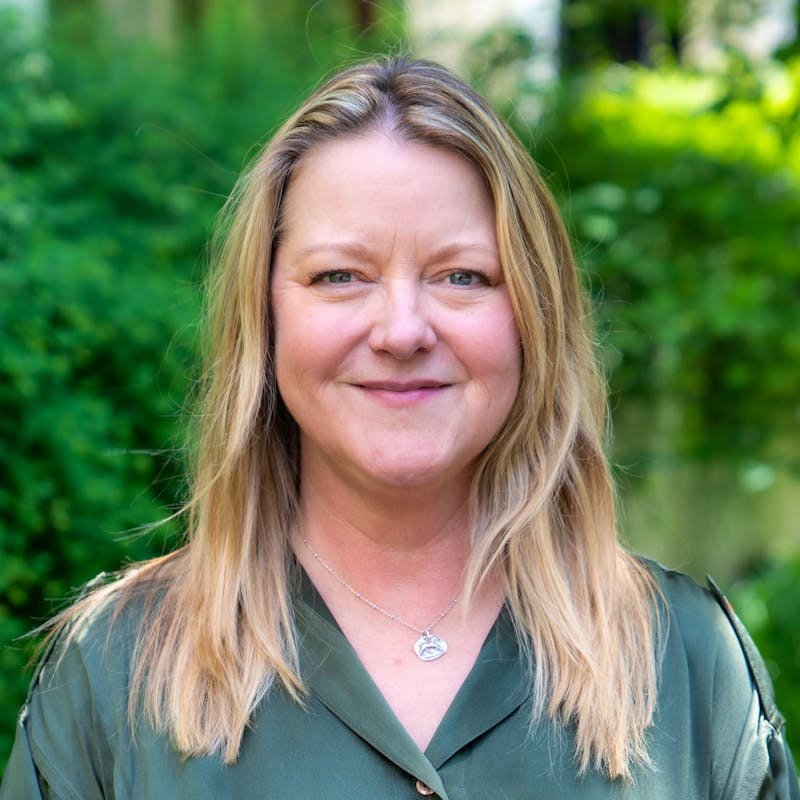As I sit in a camper trailer in the Conata Basin, near a black-footed ferret recovery site, I look out at grasslands flaked by 36-million-year-old sandstone formations. Worn out from the last 14 hours in the heat while wrapping up a field project, I am reminded of just how much work it takes to recover the endangered black-footed ferret. I know we are making a difference thanks to the camaraderie and partners involved — many of whom are staying here at “Ferret Camp” with me.
Partnerships in Recovery
Every fall we convene at Ferret Camp, on property owned and managed by the Conata Ranch and Trust, a nonprofit landholder dedicated to raising bison. While living here at camp we coordinate efforts for black-footed ferret field projects. Conata Basin has a spectacular backdrop encompassing the adjacent Badlands National Park, which itself is a wildlife mecca despite its formidable-sounding name. The basin includes other private lands, such as the Conata Ranch, but is dominated by Buffalo Gap National Grasslands, managed by the US Forest Service along with neighboring Badlands National Park. It is here in the Conata Basin that the carnivore of the plains and one of the most endangered species of North America can once again thrive. More than 150 black-footed ferrets inhabit the basin, making it the largest and most successful recovery sites among more than a dozen active sites since recovery efforts began for the species in 1996.
In these 27 years, Defenders of Wildlife, along with Prairie Wildlife Research and the Humane Society of the United States, have provided on-the-ground monitoring and recovery efforts at Conata Basin. One critical monitoring program, in partnership with the United States Geological Survey, studies how sylvatic plague can disrupt the grassland ecosystem and how best to combat the disease in order to protect both ferrets and prairie dogs. Most of our field work, in partnership with the federal agencies, includes the annual ferret survey. This survey involves multiple weeks of spotlighting for this nocturnal animal, locating and trapping ferrets, and giving them vaccinations against plague and microchips. Another large portion of our work involves conserving black-tailed prairie dogs.
Why Prairie Dogs?
Ferrets rely on prairie dogs, both as prey and for their burrows, which the ferrets use for cover and to raise their young. Prairie dogs also support dozens of other species such as the burrowing owl, Ferruginous hawk, mountain plover, swift fox and the American badger.
Today, Conata Basin contains upwards of 15,000 prairie dog acres, which is vital habit for plains wildlife, including the black-footed ferret. To recover ferrets, we conduct field projects aimed at increasing prairie dog populations in their historical range. Public lands such as Buffalo Gap National Grassland are key. By expanding prairie dog colonies, we hope to increase the ferret population.
Recently, our most successful day on a prairie dog field project involved trapping nearly 40 prairie dogs that we conducted health checks on and then released into old burrows on the prairie. Our work entails trapping them in family groups, or coteries, so they can maintain their family dynamics within their communities. Their new home, closer to the core ferret recovery site, helps further our goal to expand the prairie dog habitat needed for ferrets and other plains wildlife.
Making a Difference
An intern working on the project asked me why we put so much work into recovering species. I explained that it’s like when you have carpet and you pull at a loose thread, the whole carpet begins to unravel. The same is true for the prairie dog— when we begin to lose this keystone species, other animals also blink out, like the black-footed ferret.
What is most remarkable, I said, is that prairie dogs occupy only about two percent of their former range. So, conserving them on such a large expanse of grasslands like Conata Basin—thanks to the hard, collaborative work of the agencies and partners—is what it takes to recover wild ferrets back to the prairie. And as I stare out at the massive expanse of grasslands, I am reminded of the incredible partnerships we have here, working together to recover the black-footed ferret back to the plains.










